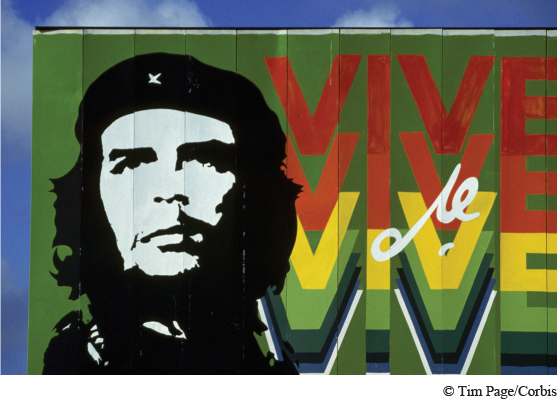The Globalization of Liberation: Focus on Feminism
AP® EXAM TIP
You must know features of the rise of women’s rights in many countries since the early nineteenth century.
More than goods, money, and people traversed the planet during the most recent century. So too did ideas, and none was more powerful than that of liberation. Communism promised workers and peasants liberation from capitalist oppression. Nationalism offered subject peoples liberation from imperialism. Advocates of democracy sought liberation from authoritarian governments.
The 1960s in particular witnessed an unusual convergence of protest movements around the world, suggesting the emergence of a global culture of liberation. Within the United States, several such movements — the civil rights demands of African Americans and Hispanic Americans; the youthful counterculture of rock music, sex, and drugs; the prolonged and highly divisive protests against the war in Vietnam — gave the 1960s a distinctive place in the country’s recent history. Across the Atlantic, swelling protests against unresponsive bureaucracy, consumerism, and middle-

The communist world too was rocked by protest. In 1968, a new Communist Party leadership in Czechoslovakia, led by Alexander Dubcek, initiated a sweeping series of reforms aimed at creating “socialism with a human face.” Censorship ended, generating an explosion of free expression in what had been a highly repressive regime; unofficial political clubs emerged publicly; victims of earlier repression were rehabilitated; secret ballots for party elections were put in place. To the conservative leaders of the Soviet Union, this “Prague Spring” seemed to challenge communist rule itself, and they sent troops and tanks to crush it. Across the world in communist China, another kind of protest was taking shape in that country’s Cultural Revolution (see “Communism and Industrial Development” in Chapter 21).
In the developing countries, a substantial number of political leaders, activists, scholars, and students developed the notion of a “third world.” Their countries, many only recently free from colonial rule, would offer an alternative to both a decrepit Western capitalism and a repressive Soviet communism. They claimed to pioneer new forms of economic development, of grassroots democracy, and of cultural renewal. By the late 1960s, the icon of this third-
No expression of this global culture of liberation held a more profound potential for change than feminism, for it represented a rethinking of the most fundamental and personal of all human relationships — that between women and men. Feminism had begun in the West in the nineteenth century with a primary focus on suffrage and in several countries had achieved the status of a mass movement by the outbreak of World War I (see “Feminist Beginnings” in Chapter 16). The twentieth century, however, witnessed the globalization of feminism as organized efforts to address the concerns of women took shape across the world. Communist governments — in the Soviet Union, China, and Cuba, for example — mounted vigorous efforts to gain the support of women and to bring them into the workforce by attacking major elements of older patriarchies (see Working with Evidence, Source 23.1). But feminism took hold in many cultural and political settings, where women confronted different issues, adopted different strategies, and experienced a range of outcomes.